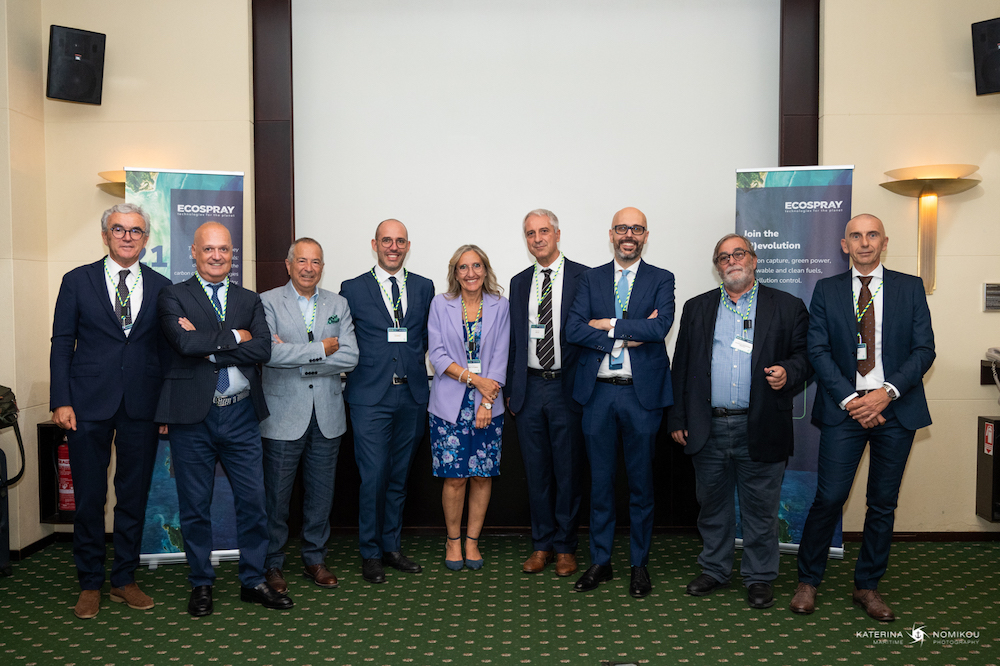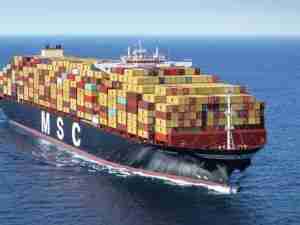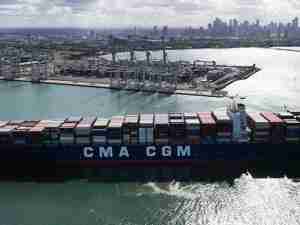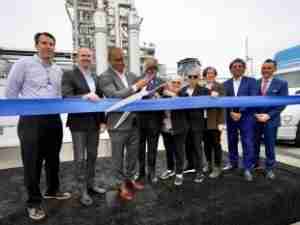Ecospray, the Italian company specialized in integrated solutions for the sustainable conversion of maritime and land-based industries, announced in Athens, Greece, the finalization of its first two Carbon Capture technologies for the maritime sector. They will be available on the market as of Q1 2024 and will enable the capture of up to 80% of the CO2 emitted during ship operation in specific conditions. Testing of the new technologies, in the laboratory phase, was carried out in collaboration with the University of Turin.
In Athens, Ecospray brought together industry stakeholders to talk about decarbonization. During the “Capture the future: evolution and technologies for decarbonization” seminar, the company presented the results of the testing phase, conducted during 2023, which led to the industrialization of the two Carbon Capture technologies.

Ecospray's CO2 Capture Solutions
Ecospray has developed a pilot plant with two innovative CO2 capture technologies by chemical absorption, specifically with amines or calcium hydroxide.
After the testing of both technologies in the Ecospray testing facility, the pilot plant was installed on a commercial ship for about 2 months to test the solutions under real conditions.
The objectives of the testing phase were largely achieved with capture efficiencies of up to 80%. Thanks to the data collected, it was possible to optimize the design of the components and their selection, as well as improve the process, thus ensuring the sustainability of the project for both the company and the market. Specific designs have already been completed sizing plants to capture up to 2,000 tonnes of CO2 per single trip.
Carbon Capture with Amines
This technology is based on the chemical absorption of CO2 using an amine solution. The pilot plant confirmed the feasibility of the process developed by Ecospray, which differs significantly from the conventional process used for land applications. The new system is easy to apply in the marine sector and guarantees energy savings of at least 10-15%, compared with the conventional high-temperature regeneration process.
Carbon Capture with Calcium Hydroxide
In this case, the CO2 reacts with lime milk. The carbon dioxide is then “converted” into calcium carbonate, a solid material. Very high levels (90-95%) of reagent conversion were achieved in the testing phase of the technology, which confirms a very advanced process optimisation.
A Third Technology Soon
Ecospray is also developing a third technology involving CO2 capture with molten carbonate fuel cells (MCFCs). This solution is at the heart of the CapLab, the joint laboratory of Ecospray and University of Genoa. The industrialization phase for this technology should start in 2025.
“Carbon Capture technologies can contribute significantly to achieving the 'zero emissions of CO2’ goal by 2050 in the shipping sector,” said Filippo Lossani, Director B.U. Marine, Ecospray. “It is necessary to adopt an analytical approach that starts from a full awareness of the state of the art and the needs of the sector. In order to implement a transition that is truly sustainable, it is essential to implement technologies that allow us to decarbonize the plants, facilities and vehicles we already have. This is what Carbon Capture is all about. Our systems will enable current ships to significantly reduce emissions and fall well within the current IMO CO2 reduction parameters. We have decided to develop different solutions to be able to adapt them to different contexts”, Mr. Lossani added. “This is because factors such as, for example, the size of a ship, its type, route and the space available on board greatly influence the choice of a solution. Our commitment, as a company, is to be commercially available on the market from next year. We hope that by that date the relevant legislation will also have been approved so that we can start a new, remarkable path for the shipping industry”.










